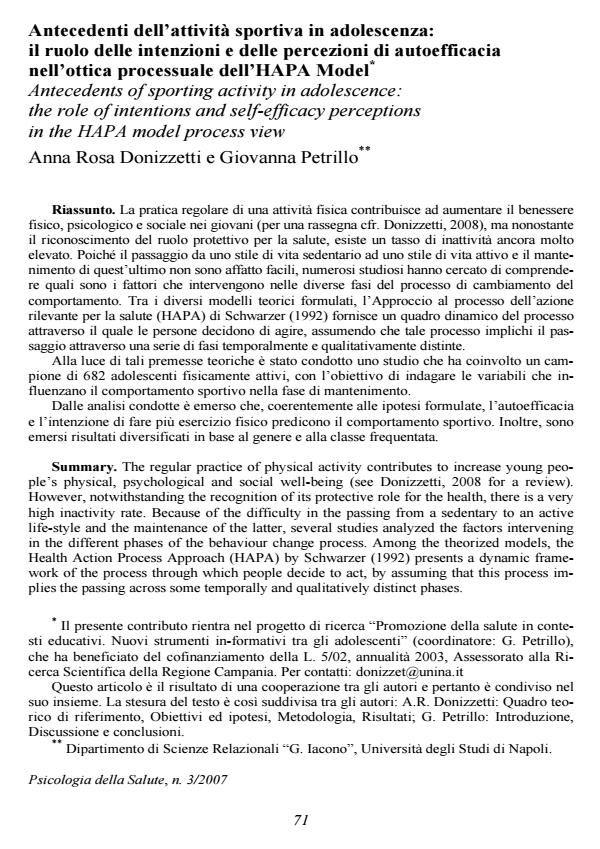Antecedenti dell’attività sportiva in adolescenza: il ruolo delle intenzioni e delle percezioni di autoefficacia nell’ottica processuale dell’HAPA Model
Titolo Rivista PSICOLOGIA DELLA SALUTE
Autori/Curatori Anna Rosa Donizzetti e Giovanna Petrillo
Anno di pubblicazione 2008 Fascicolo 2007/3
Lingua Italiano Numero pagine 16 P. 71-86 Dimensione file 233 KB
DOI
Il DOI è il codice a barre della proprietà intellettuale: per saperne di più
clicca qui
Qui sotto puoi vedere in anteprima la prima pagina di questo articolo.
Se questo articolo ti interessa, lo puoi acquistare (e scaricare in formato pdf) seguendo le facili indicazioni per acquistare il download credit. Acquista Download Credits per scaricare questo Articolo in formato PDF

FrancoAngeli è membro della Publishers International Linking Association, Inc (PILA)associazione indipendente e non profit per facilitare (attraverso i servizi tecnologici implementati da CrossRef.org) l’accesso degli studiosi ai contenuti digitali nelle pubblicazioni professionali e scientifiche
Antecedents of sporting activity in adolescence: the role of intentions and self-efficacy perceptions in the HAPA model process view ABSTRACT: The regular practice of physical activity contributes to increase young people’s physical, psychological and social well-being (see Donizzetti, 2008 for a review). However, notwithstanding the recognition of its protective role for the health, there is a very high inactivity rate. Because of the difficulty in the passing from a sedentary to an active life-style and the maintenance of the latter, several studies analyzed the factors intervening in the different phases of the behaviour change process. Among the theorized models, the Health Action Process Approach (HAPA) by Schwarzer (1992) presents a dynamic framework of the process through which people decide to act, by assuming that this process implies the passing across some temporally and qualitatively distinct phases. A study was conducted involving a sample of 682 physically active adolescents. The purpose was to investigate the variables predicting sporting behaviour during the maintenance phase. According to the theorized hypothesis, the results illustrate that self-efficacy and the intention to increase physical activity predict sporting behaviour. Further, they show the existing of gender and attended class differences.
Anna Rosa Donizzetti e Giovanna Petrillo, Antecedenti dell’attività sportiva in adolescenza: il ruolo delle intenzioni e delle percezioni di autoefficacia nell’ottica processuale dell’HAPA Model in "PSICOLOGIA DELLA SALUTE" 3/2007, pp 71-86, DOI: